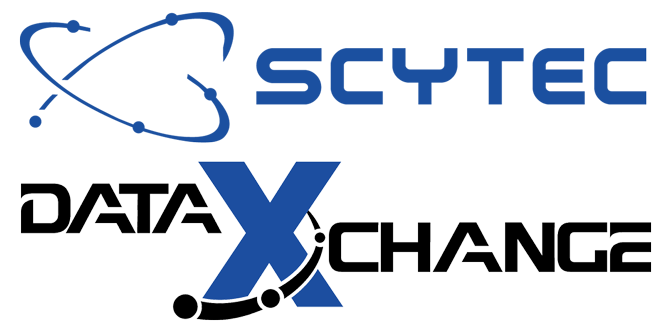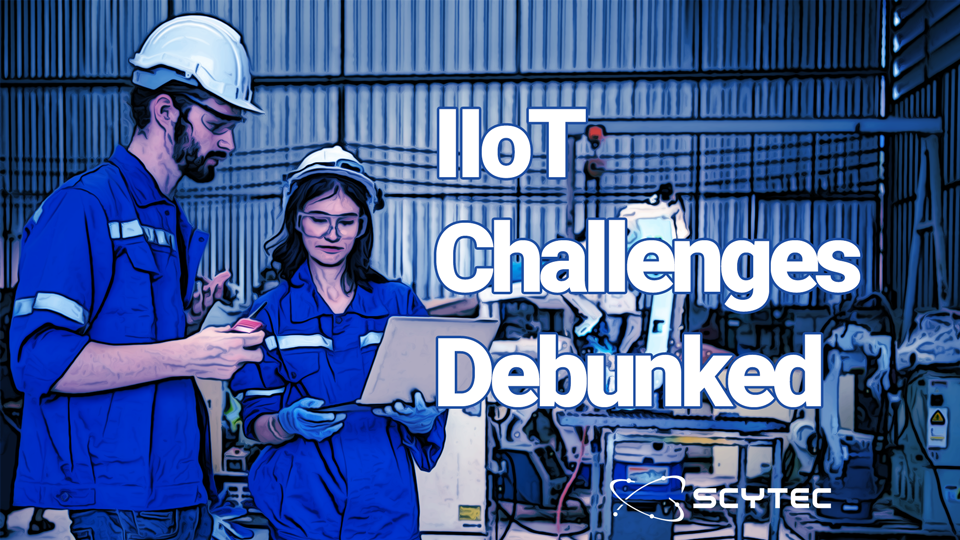IIoT Challenges Debunked
There are several misconceptions about the challenges of the implementation of IIoT related technologies in manufacturing. In this thought piece from Scytec, we will not only address common myths surrounding IIoT, but also debunk them.
First, let’s clarify what IIoT is: the Industrial Internet of Things (IIoT) refers to a network of interconnected devices ranging from computing systems and mechanical tools to everyday objects and even people equipped with unique identifiers and capable of transmitting data without the need for direct human interaction. The current manufacturing smart factory market offers many IIoT products, such as edge computing devices, hardware for pulling information off sensors and adapters that can communicate with standardized or open-source machine protocols, that integrate seamlessly with IIoT machine monitoring platforms like Scytec DataXchange.
These devices enable real-time communication, providing data that can help identify inefficiencies, bottlenecks, and other issues in the manufacturing process. Now that you have a better understanding of IIoT and its devices, it’s easier to see that this technology has the potential to significantly transform manufacturing.
Common IIoT Challenges in Implementation
Some of the most frequently cited obstacles to IIoT adoption in manufacturing are the financial risks and outdated infrastructure. Financially, the cost of implementing IIoT technologies can vary depending on how many devices are connected and the platform chosen, but there’s always an upfront investment. From an infrastructure perspective, questions often arise about integrating IIoT technologies with older equipment, such as: “How can we achieve efficiency with outdated systems?” These concerns, along with uncertainty about adapting new technology to legacy machinery, often cause hesitation.
Luckily for modern manufacturers with legacy machinery there are modern solutions in the form of PLC devices like the Scytec DataXchange SRC (Status Relay Controller) that can connect to a plethora of equipment including sensors, manual and legacy machinery ensuring that manufacturers can get the most information out of all their equipment.
Another major challenge with IIoT is data security and making sure that collected information is stored securely and within the parameters defined by contractors and regulations such as ITAR, FedRAMP and CMMC 2.0. With millions of connected devices generating huge volumes of data, it’s easy to feel overwhelmed and question the safety of the information.
So, why are these IIoT challenges currently deemed unsubstantiated by industry leaders when they were previously considered otherwise? Throughout history, technological advancements have been met with resistance, and that has always been the case from those hesitant of change and those who never evolved their products to meet the needs demanded by consumers. In the 1980s, for example, cellphones were dismissed as luxury items for the wealthy, but can you name anyone over the age of 15 that hasn’t owned one for the last decade? The lesson here is that change, particularly technological change, is inevitable, you can either get on board or get left behind and the manufacturing industry has been particularly susceptible to this notion.
Debunking the Financial Risk Myth
While any technological investment is going to carry a risk, the potential rewards of IIoT platforms like Scytec DataXchange machine monitoring far outweigh them, with continual benefits once properly inserted into a daily routine. For example, when using the Scytec DataXchange machine monitoring platform, manufacturers have seen their OEE (overall equipment effectiveness) increase from 10-30 percent on average and a return on investment (ROI) within the first few weeks of use. IIoT platforms like DataXchange’s real-time data enables manufacturers to identify bottlenecks and inefficiencies, allowing immediate adjustments and increasing shop floor performance, which ultimately translates to cost savings.
Debunking the Legacy Systems Myth
Another misconception is that older systems are incompatible with IIoT. The Scytec DataXchange machine monitoring platform, for example, can connect to any industrial machine, sensor or industrial robot whether it’s a decades-old CNC machine or a state-of-the-art 5 axis machine. By using sensors to extract data like current, vibration, thermocouples, fill levels etc., manufacturers can analyze performance, no matter the type of machine or process involved. As mentioned earlier, Scytec offers a low-cost PLC device that can be shipped from Scytec HQ direct to you preprogrammed ready to work with a wide range of legacy equipment and sensors and can be mounted to a din rail in the back of a machine’s electrical cabinet.
Debunking IIoT Security Myth
Despite the apprehension, Cloud-based data storage offers unmatched flexibility and security. Scytec offers an array of cloud storage offerings including its commercial cloud as well as an AWS GovCloud offering. For those environments where the Cloud is simply not an option, Scytec also offers an On-Premise deployment. Data can be accessed from any internet-connected device, and because the data is encrypted, it fits the requirements of previously mentioned federal regulations. Additionally, cloud storage automatically backs up data, reducing the risk of data loss compared to an unmanaged local solution.
While there is a wealth of information available on IIoT and smart manufacturing, it’s crucial to rely on trusted sources. Scytec is on top of the latest trends in manufacturing and developments, ensuring our Smart Manufacturing Platform meets industry needs.
Overcoming IIoT Myths and Challenges in Implementation
Here are some advantages of implementing IIoT platforms like DataXchange.
- Efficiency: Machine communication streamlines processes, freeing up employees to focus on more critical tasks.
- Cost Savings: IIoT can prevent costly issues like production bottlenecks, equipment downtimes, decreases in part cost and production time by providing real-time insights into production processes.
- Improved Communication: IIoT platforms enhance connectivity and communication between machinery and employees, leading to better communication between employees as well as production facilities in physically different areas.
- Instant Data Access: With more data readily available, decision-making becomes simpler and faster, especially with the ability to access Scytec DataXchange from personal smart phones, tablets and computers as well as televisions and monitors in your smart factory.
Ultimately, the biggest barriers to IIoT adoption aren’t technological but cultural. Organizations must shift from outdated routines to fully embrace smart manufacturing. By fostering a culture that supports innovation, companies can truly join the Industry 4.0 revolution. To make the most of IIoT, it’s essential for manufacturers to educate themselves on how it can benefit their shop floor environment. To learn more about how your shop floor environment can benefit from Scytec DataXchange please see a personalized demonstration here.


